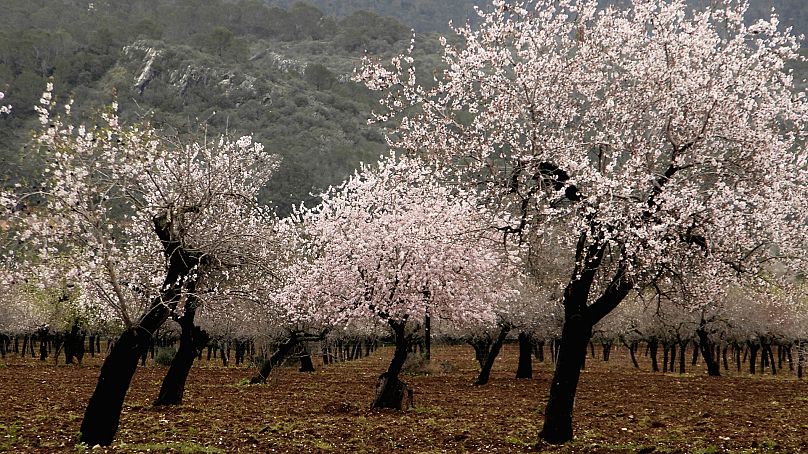The winter is the perfect time to visit Mallorca

Home to over four million almond trees, which bloom from January until late February, Mallorca’s pale pink and white blossoms make the island the perfect destination for a late winter getaway.
The biggest of the Balearics, while Mallorca is perhaps best known as a sun, sea and sand destination, you can beat the crowds by exploring the island outside of high season.
“I invite you to come to Mallorca at any time of the year,” says Catalina Cladera, President of the Mallorcan Council.
“It’s true that summer is famous for the sun and the beach, but Mallorca offers a lot of interesting products all year round, including hiking, nature, sports, culture, gastronomy and obviously a great climate, an extraordinary landscape,” she explains.
Where can I see almond blossoms in Mallorca?
While you can find almond trees dotted all over the island, the best can be found around the rural villages of east and central Mallorca, between the central municipality of Selva and the eastern town of Son Servera.
Son Servera even has its own Almond Blossom Festival. Held in the historic gardens of Ca S’Hereu, an 18th century ‘finca’ (ranch), the festival takes place on the first weekend in February.
If you visit, make sure to sample the region’s almond liqueur, Flor d’Ametlla, while you wander among stalls selling gifts made from almond wood as well as other locally made products.
Almond blossoms are not the only colourful spectacle in Mallorca at this time of year though. If you visit the island in February you’ll also be right on time for carnival season.
When is Carnival in Mallorca?
Taking place over the 18 and 19 February, Els Darrers Dies (The Last Days) celebrates the last days of meat eating before the abstinence of Lent. While the biggest parade snakes through the streets of the island’s capital Palma, local parades and festivities take place all over the island, from small villages to larger towns.
Experiencing local carnivals is a great way to get to know the culture of the island, something the Mallorcan tourist board is keen to highlight, especially since the COVID pandemic.
“I think that Mallorca has been wanting to change the tourism model for some time now, to change the model towards a tourism that is more respectful of the environment, that values our culture, our heritage, and our gastronomy,” says Cladera.
“We’ve been on this wave for a long time, but obviously the pandemic has accelerated it.”
Where is the best hiking in Mallorca?
If a taste of local culture is what you’re after, there’s no better way to explore the island than on foot. Mallorca is blessed with many hiking trails which weave across the island – from the rugged Tramuntana mountains of the west, to the Peninsula de Llevant Nature Park in the north east.
The cooler seasons are a great time to explore these hilly trails and stop off in small villages along the way. One of the most famous is Deià. The cultural landscape of the Tramuntana mountains is a UNESCO World Heritage Site, and the town of Deià, historically a haven for artists such as the English writer Robert Graves, is a part of the area’s rich cultural tapestry.
One of the most popular hikes in the area is the three hour hike from Deià to the neighbouring town of Soller. Taking you along a coastal route, the hike is a relatively easy one as it follows the old road between the two towns. Expect to see great views of the sea, mountains and ‘fincas’ as you wind your way along the path.
Whichever hiking route you choose, you’re bound to find something to inspire you, as Cladera explains, “You should visit Mallorca at least once in your life and I’m sure you will repeat it after seeing everything the island has to offer.”
“The light, the climate, the landscape, it is without a doubt the best Mediterranean island to visit and enjoy.”
